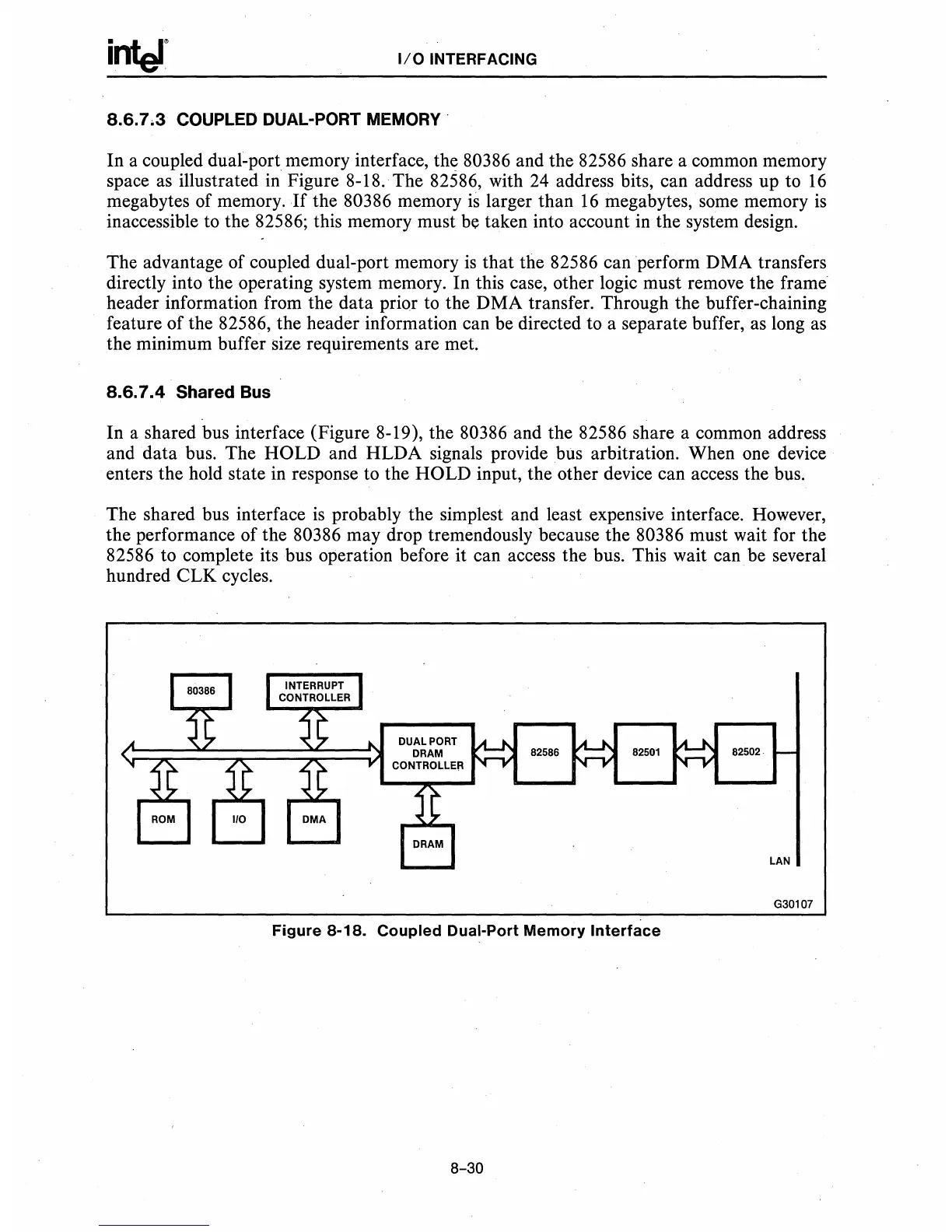I/O
INTERFACING
8.6.7.3
COUPLED
DUAL-PORT MEMORY'
In a coupled dual-port memory interface, the 80386 and the 82586 share a common memory
space
as
illustrated
in
Figure 8-18. The 82586, with
24
address bits, can address up to
16
megabytes of memory.
If
the 80386 memory
is
larger than
16
megabytes, some memory
is
inaccessible to the 82586; this memory must be taken into account in the system design.
The advantage of coupled dual-port memory
is
that the 82586 can perform DMA transfers
directly into the operating system memory. In this case, other logic must remove the frame
header information from the data prior to the DMA transfer. Through the buffer-chaining
feature of the 82586, the header information can be directed to a separate buffer,
as
long
as
the minimum buffer size requirements are met.
8.6.7.4 Shared Bus
In a shared bus interface (Figure 8-19), the 80386 and the 82586 share a common address
and data bus. The
HOLD and HLDA signals provide bus arbitration. When one device
enters the hold state in response to the
HOLD input, the other device can access the bus.
The shared bus interface
is
probably the simplest and least expensive interface. However,
the performance of the
80386 may drop tremendously because the 80386 must wait for the
82586 to complete its bus operation before
it
can access the bus. This wait can be several
hundred
eLK
cycles. .
82502·
LAN
G30107
Figure
8-18.
Coupled
Dual-Port
Memory
Interface
8-30

